LIVE: A new frontier in the climate fight
Follow the latest updates on MethaneSAT, an innovative climate satellite.
MethaneSAT, a unique satellite created by an environmental nonprofit to fight global warming, launched on March 4, 2024.
Traveling pole-to-pole in under 100 minutes, MethaneSAT will circle the globe, scanning for climate pollution that was previously invisible.
We’re tracking the progress of this groundbreaking satellite as it embarks on its mission to cut climate pollution.
-
Latest updates
-
- March 4: 8:12 p.m. MethaneSAT is in orbit
- March 4: 5:50 p.m. We have liftoff!
- March 4: 4:55 p.m. Happening now: MethaneSAT launch
Live updates
March 5
MethaneSAT has launched successfully. Live updates have been paused as we await the release of the satellite’s first images later this year. Keep up with Vital Signs’ ongoing methane-related coverage here.
March 4
8:12 p.m. EST: MethaneSAT is in orbit
MethaneSAT has deployed successfully from the Falcon 9 rocket.
A new era in tracking global methane pollution and holding emitters accountable has begun! Check out the moment @MethaneSAT successfully separates from the @SpaceX #Falcon9 and commences orbit. pic.twitter.com/x5rwM91RUd
— EDF (@EnvDefenseFund) March 5, 2024
Circling the Earth 15 times a day, MethaneSAT will soon begin measuring changes in methane concentrations as small as three parts per billion. This amazing technological achievement has a profoundly human purpose, Dominique Browning, co-founder of EDF affiliate Moms Clean Air Force, reminds us.
“What I see, as that satellite takes off, are images of my friends and colleagues hitching rides into space,” Browning wrote. “The people who must live with the impacts of methane leaking from oil and gas fields around their homes, their schools, their day care centers… We are already feeling the devastation of extreme weather and wildfires made worse by climate disruption. MethaneSAT will help find the polluters responsible so we can hold them to account.”
5:50 p.m. EST: We have liftoff!
After a flawless launch, MethaneSAT is heading toward space on a SpaceX Falcon 9 rocket. The satellite is expected to be released from the rocket at 7:38 p.m. EST. We’ll keep you updated here.
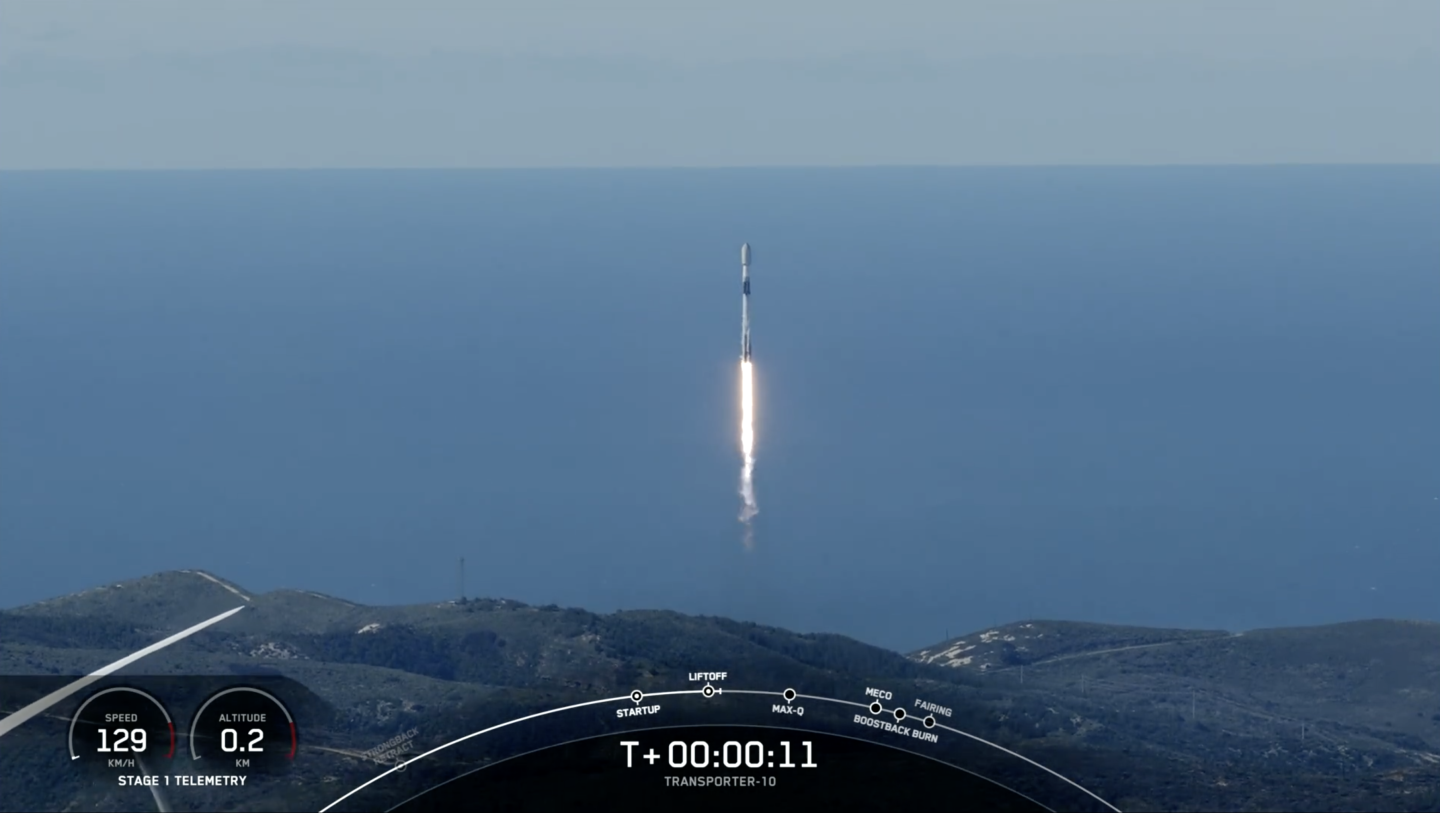
4:55 p.m. EST: Happening now: MethaneSAT launch
The launch of a unique satellite, built to fight climate change, is just minutes away. Watch the SpaceX livestream here:
Watch Falcon 9 launch 53 spacecraft to orbit https://t.co/9MYMPKZM5j
— SpaceX (@SpaceX) March 4, 2024
4:40 p.m. EST: Countdown to launch begins
Join former CNN space correspondent Rachel Crane for an inside look at the MethaneSAT mission and how it will work, followed by a live feed of the SpaceX rocket launch that will send the satellite into orbit.
4 p.m. EST: What to expect at launch
At Vandenberg, the crew will soon begin fueling up the rocket carrying MethaneSAT to space. Barring any weather, technical or other challenges, launch is expected at 2:05 p.m PST/ 5:05 EST.
Tune in here for EDF’s special pre-launch coverage, featuring the innovators behind MethaneSAT, about 25 minutes before launch.
The first satellites will begin to release from the rocket about one hour after launch. MethaneSAT will be the last to deploy, at 7:38 p.m. EST.
“That separation will likely have us spinning slightly,” says MethaneSAT’s Peter Vedder. “The satellite uses its actuators to slow that down until we are stable.”
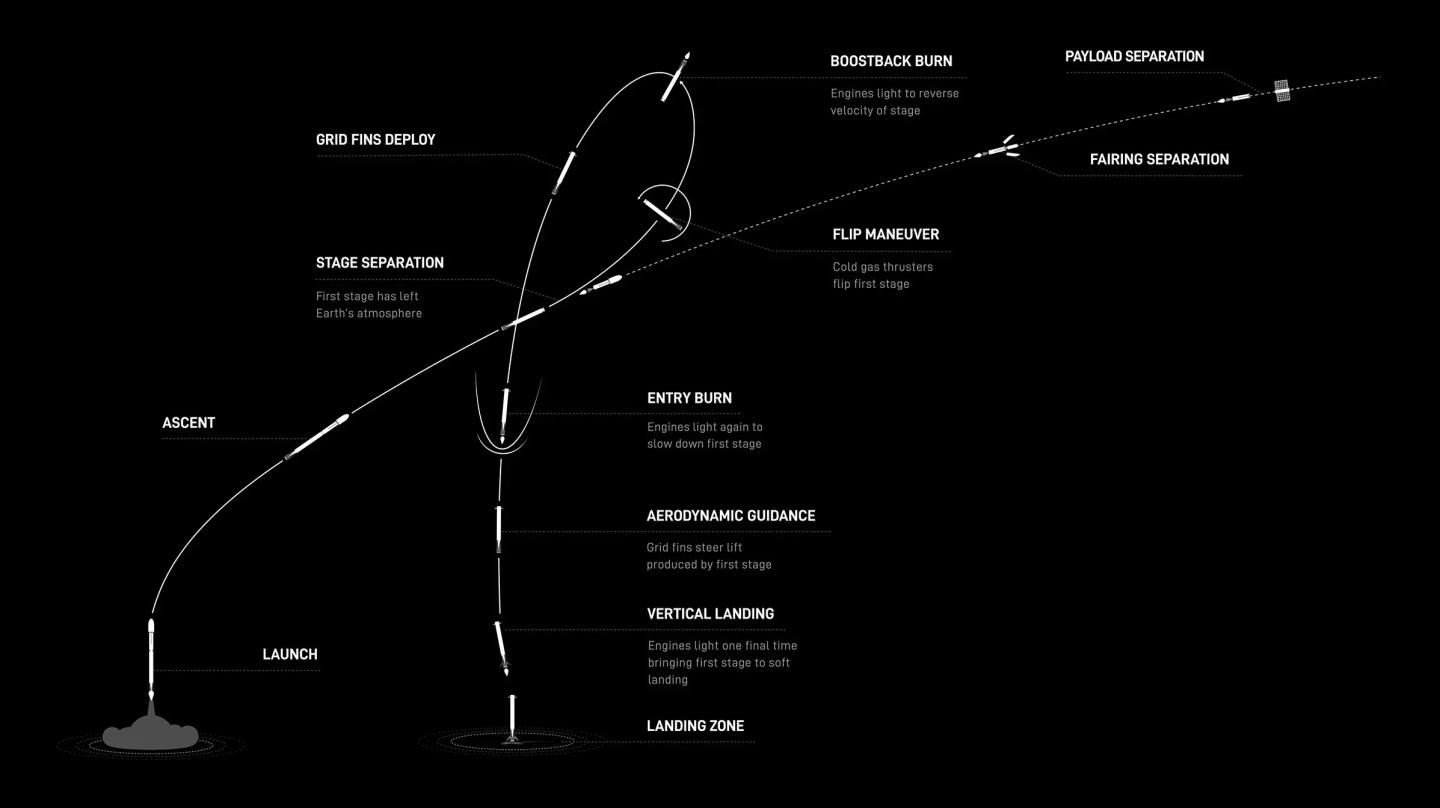
Once the satellite stops spinning, it will spread its solar wings, using sensors to orient itself toward the Sun to charge its batteries. Finally, MethaneSAT will phone home using a radio beacon – a 1 second pulse every 5 minutes – that mission control will locate using ground antennae.
Once located, operators will begin a series of checks to see if the satellite is healthy and responsive. “With that first communication, we should be seeing the spacecraft telemetry (voltages, temperatures, computer state, et cetera)” says Vedder. “The operators can scan those to ensure they are in the correct ranges.”
After launch, engineers at BAE Systems (formerly Ball Aerospace) will spend up to 3 months making sure all systems work. MethaneSAT’s first images are expected within six months of launch.
3 p.m. EST: How will MethaneSAT help reduce climate pollution?
MethaneSAT will reveal climate pollution that has been largely invisible. Previously, when EDF measured and publicly released data on methane emissions, oil and gas companies responded by making reductions. The industry is a major source of methane pollution, and can fix most methane leaks relatively quickly and cost-effectively.
“Some call it low-hanging fruit,” says Steve Hamburg, EDF’s chief scientist and MethaneSAT project leader. “I like to call it fruit lying on the ground.”
Because methane pollution has an outsized influence on the climate in the near-term, cutting methane is the fastest way to slow global warming.
Many companies in the Permian Basin of Texas and New Mexico, one of the world’s largest oil fields, significantly decreased their emissions after EDF and partners released the first measurements of methane pollution from the region. More reductions were made after more data was released.
“MethaneSAT scales this regional example to the entire planet,” says EDF’s Andrew Baxter, a former oil and gas engineer who now works to reduce the industry’s methane emissions. “Time and again, we have seen how increased transparency can spur higher standards within the oil and gas industry.”
1:40 p.m. EST: At Vandenberg, thrills and nerves
Breakfast just wrapped up in California, where MethaneSAT is due to launch from Vandenberg Space Force base in a few hours.
“There’s palpable excitement in the room,” said EDF’s Millie Chu Baird, director of mission impact for MethaneSAT. “Today is a really big day for all of us.”
“I’m thrilled by the prospect of this satellite finally going into space. It will be a way we actually move the needle on temperatures within the next decade,” said Krupp, EDF’s president.
This historic day has been years in the making. @MethaneSAT is just hours away from launch. It’s the dawning of a new era of climate action and accountability. The moment when we can stop fighting headwinds and start to have the wind at our backs. 1/5 pic.twitter.com/7KfVweTDPC
— Fred Krupp (@FredKrupp) March 4, 2024
“I’m incredibly excited. I’m a little nervous!” said Brownstein, who leads EDF’s energy transition team. “Although I have great faith in the crew at SpaceX to get this satellite up. Having this data is going to be the key to holding companies and countries accountable for methane pollution and giving them the information they need to take action.”
It’s all about accountability and action. That’s why our @MarkSBrownstein is so excited. When @MethaneSAT launches today it’ll usher in a new era of accountability that enables fast action to #CutMethane. pic.twitter.com/v7YXB93Yvg
— EDF (@EnvDefenseFund) March 4, 2024
“It’s incredible to be here to watch the launch of MethaneSAT,” says EDF chief scientist and MethaneSAT project lead Steve Hamburg. “To be able to put into space the most advanced, greenhouse-gas-measuring satellite ….I’m looking forward to using the data to really make a difference.”
🔴LIVE from Santa Barbara 🇺🇸:
MethaneSAT Project Lead Dr. Steven Hamburg reflects on "many years of hard work and an incredible team effort" and the excitement ahead of launch in less than 4hrs ⏳ pic.twitter.com/nTme1pJXRE— MethaneSAT (@MethaneSAT) March 4, 2024
1 p.m. EST: Excitement building for launch
MethaneSAT fans have been gathering at Vandenberg Space Force Base for the launch festivities. EPA Chief Michael Regan and Colorado Sen. John Hickenlooper were among those in attendance last night.
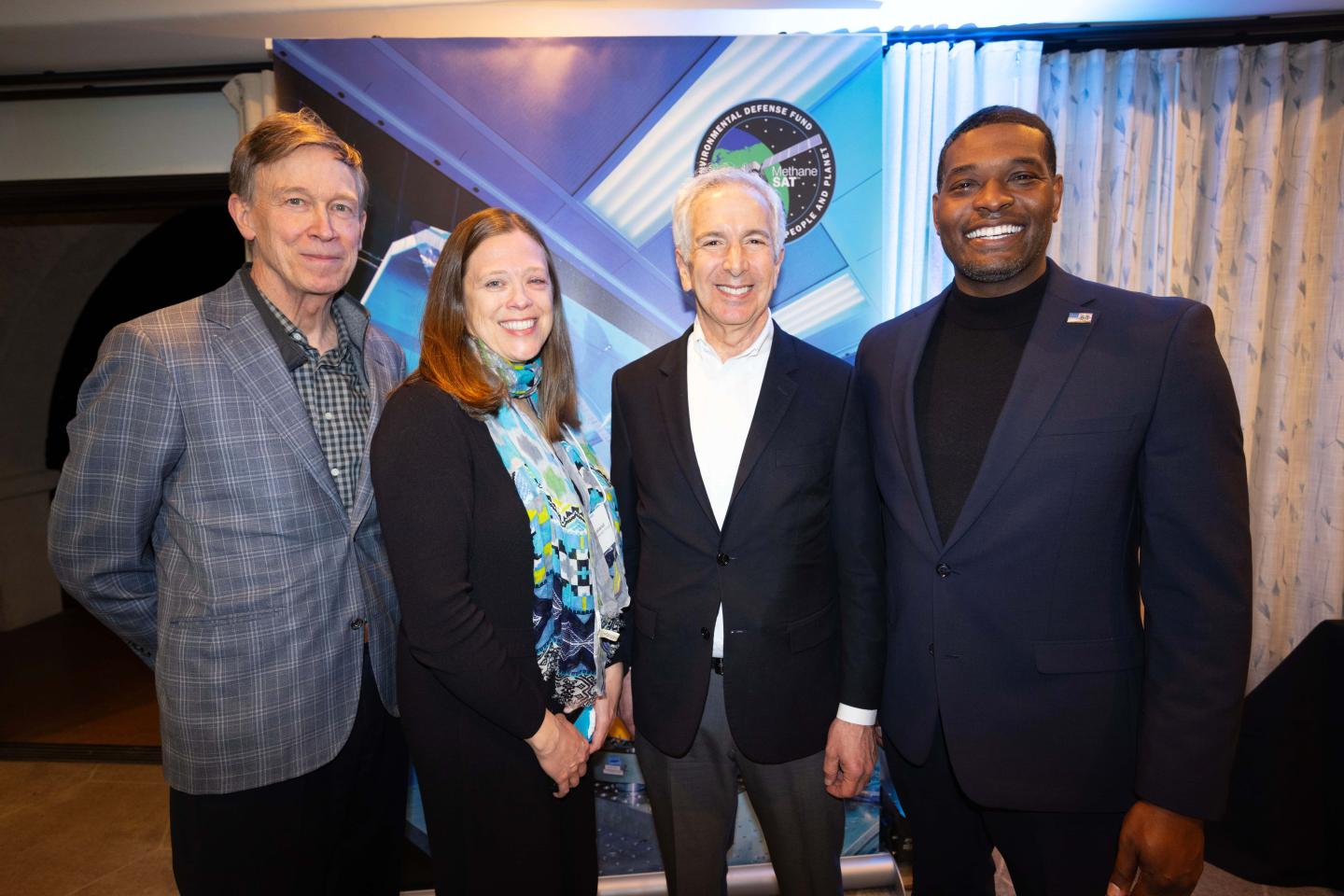
11 a.m. EST: How to ensure a successful rocket launch
It’s launch day, and worth noting that even though SpaceX has successfully launched more than 300 Falcon 9 rockets, unforeseen circumstances can interfere with the best laid plans. Weather is one source of delays. Errant planes and boats in the area can also scrub a launch.
And so, apparently, can woodpeckers. In 1995, workers preparing for the launch of the space shuttle Discovery found 205 holes in the shuttle’s foam insulation, and had to send the spacecraft back for repairs. (The culprit was spotted on camera.) NASA now has a Bird Investigation Review and Deterrent team — BIRD — and no further woodpecker attacks have been recorded.
Given all the complexities of a space mission, there are also some less technical ways to ward off bad vibes on launch day. NASA’s Jet Propulsion Laboratory, for example, hands out bags of “lucky peanuts,” a ritual that goes back to a successful moon mission in 1964.

At Blue Canyon Technologies, the firm that built MethaneSAT’s body, staff bring in lucky animal figurines to help ensure success. The animal of choice for MethaneSAT was, naturally, a cow — which team members propitiated with snacks and occasionally money.
“Their favorite food,” confirmed BCT spacecraft assembly, integration and test manager Shivani Patel, “is chocolate."
Peter Vedder, MethaneSAT’s mission systems director, puts his faith in good engineering. “The ritual is knowing we’ve done everything we possibly can,” he says. “Then, you just take a deep breath and hope nothing bad happens!”
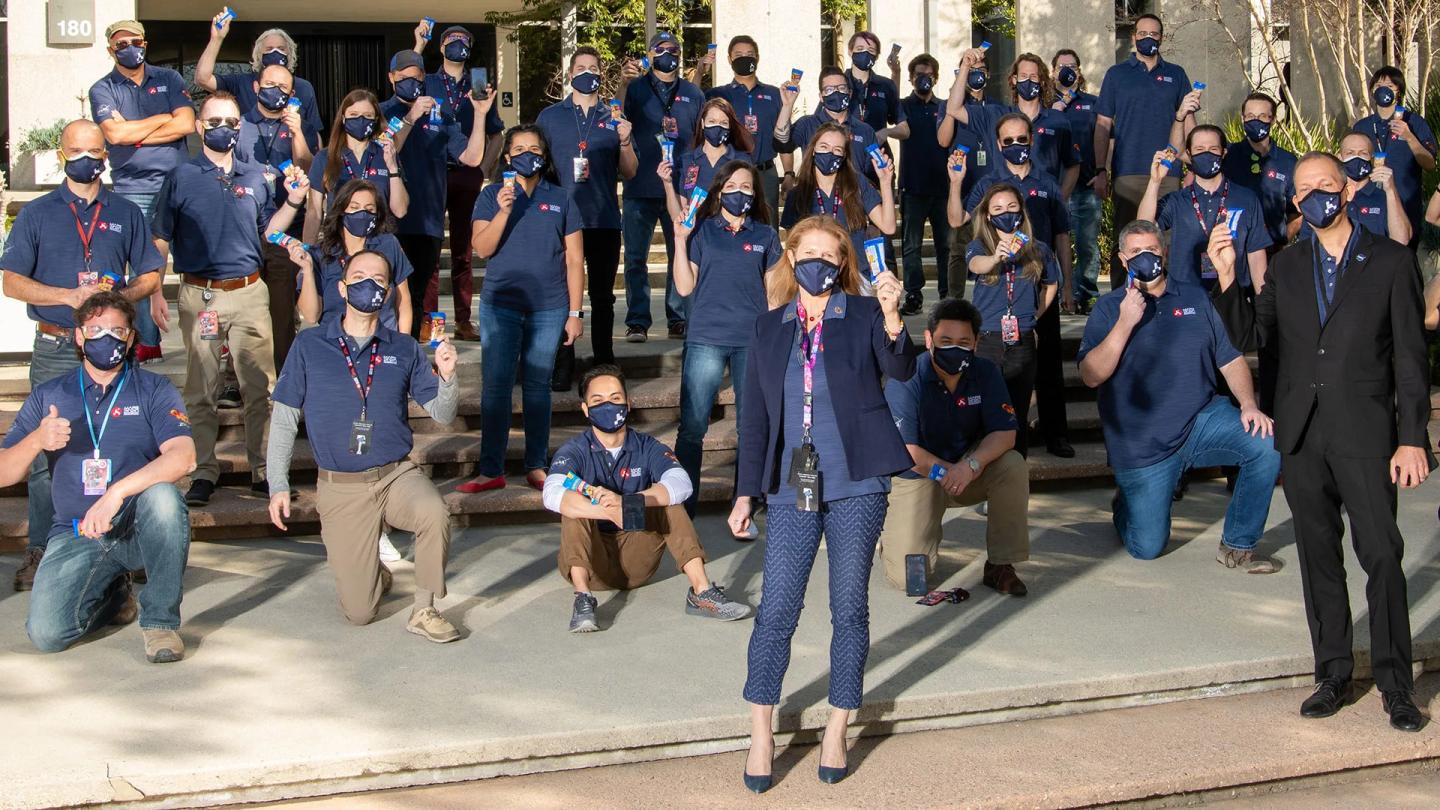
9:30 a.m. EST: Seat belts fastened, ready for takeoff
Here’s MethaneSAT, loaded into position on SpaceX’s Falcon 9 rocket. (MethaneSAT is the small white box, about halfway down on the right.) There are 53 satellites on this rocket — only one created by a nonprofit to find invisible methane pollution and fight climate change.
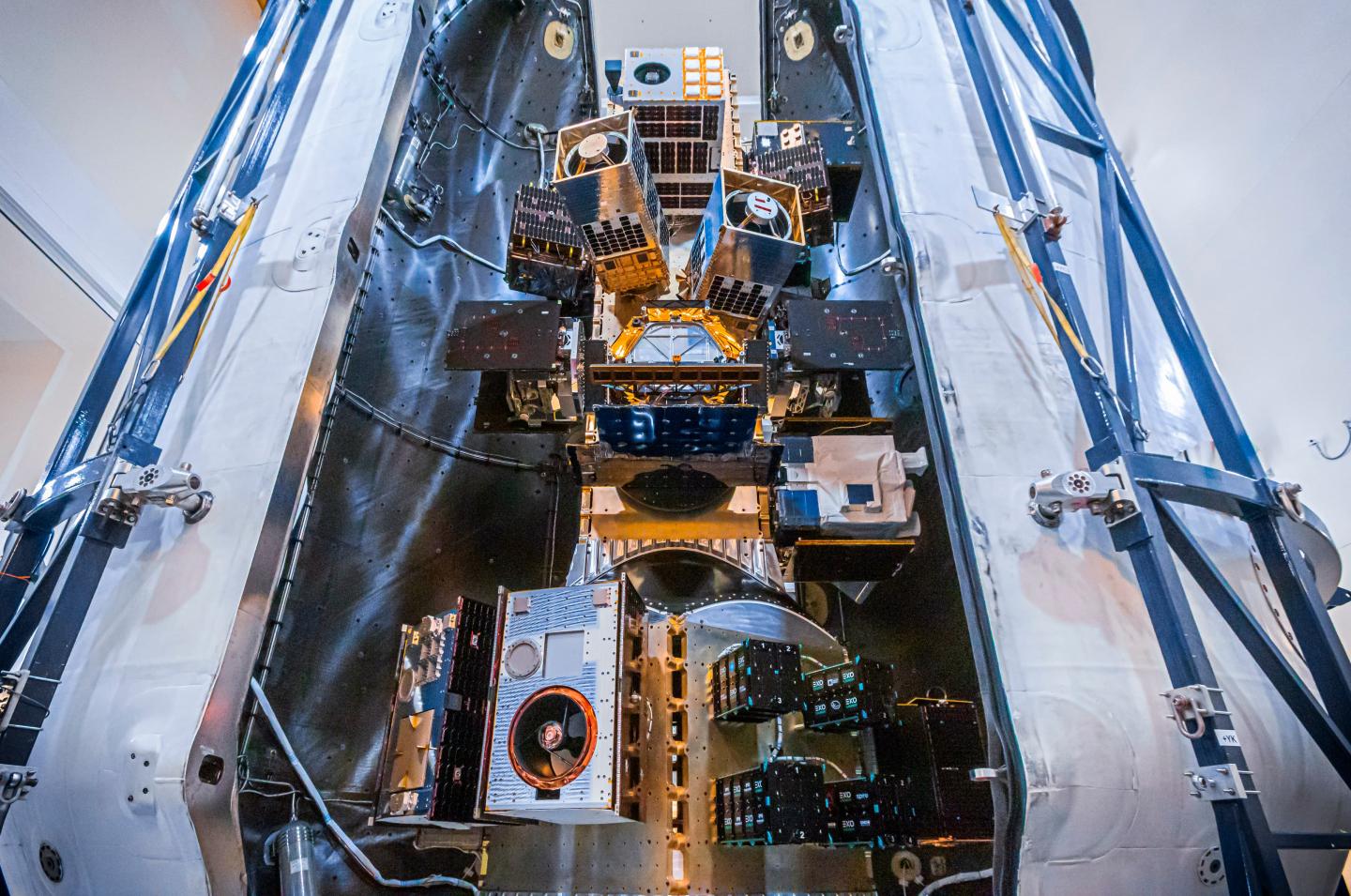
The Transporter-10 mission carrying MethaneSAT is expected to launch at 2:05 Pacific/5:05 Eastern today. Stay with us for live coverage throughout the day.
Godspeed, small satellites!
March 4: MethaneSAT to launch today
SpaceX announced that its Transporter 10 mission — MethaneSAT’s ride to space — is scheduled to launch from Vandenberg Space Force Base at 2:05 PST/5:05 EST on Monday, March 4, 2024.
Join us here for behind-the-scenes coverage on Monday, including an exclusive pre-launch special featuring the innovators who made MethaneSAT possible, followed by a live feed of the launch.
As with any rocket launch, this date and time is subject to change. We’ll keep you posted on any updates.
March 1: Launch information coming soon!
MethaneSAT is expected to launch next week — we hear that SpaceX will make a decision on the date any day now. Stay tuned for more information on how you can watch this exciting moment in the climate fight, and join us for some special behind-the-scenes coverage on launch day itself.
If you’re curious about what to expect, there’s another SpaceX Falcon 9 launch scheduled for Saturday morning, carrying a Dragon spacecraft with crew heading for the International Space Station. This image from SpaceX sketches out the rocket’s trajectory, which will be similar to what we expect for next week’s Transporter-10 mission carrying MethaneSAT.
Note how the rocket's first stage makes a graceful landing so it can be recovered and reused.

Feb. 28 Kiwis in space
There’s a deep bench of experts behind the MethaneSAT mission, including from some unexpected corners — like New Zealand.
New Zealand has high hopes for its young space industry, and MethaneSAT is part of the plan. The collaboration is the country's first government-funded space mission.
“MethaneSAT’s climate goals were a good fit with our values,” said Andrew Johnson, deputy director of the New Zealand Space Agency, which was created in 2016. “The idea that we can spotlight hotspots around the world that offer a fast opportunity to reduce climate pollution is really important.”
Mission control operations — the pointing and positioning of the satellite — will move from the United States to New Zealand in the coming months, after MethaneSAT settles into orbit.
Rocket Lab, the company that built the world’s first private orbital launch site in New Zealand, will operate mission control for about a year before handing the keys to University of Auckland’s Te Pūnaha Ātea Space Institute, where students will be training for careers in space.
In addition, New Zealand scientists will be testing MethaneSAT’s ability to measure methane from agriculture — one of the largest sources of methane emissions worldwide. Agriculture is also New Zealand’s largest source of greenhouse gas emissions. Obtaining these measurements from space is a new field where MethaneSAT will once again be breaking ground.
Feb. 27: How does MethaneSAT work?
If you weren’t expecting to hear about satellites from an environmental organization, you’re not alone! We’ve put together this handy visual guide to MethaneSAT so you can see how this satellite was built to fight climate change.
For even more detailed scientific information on this game-changing satellite, follow @MethaneSAT on X.
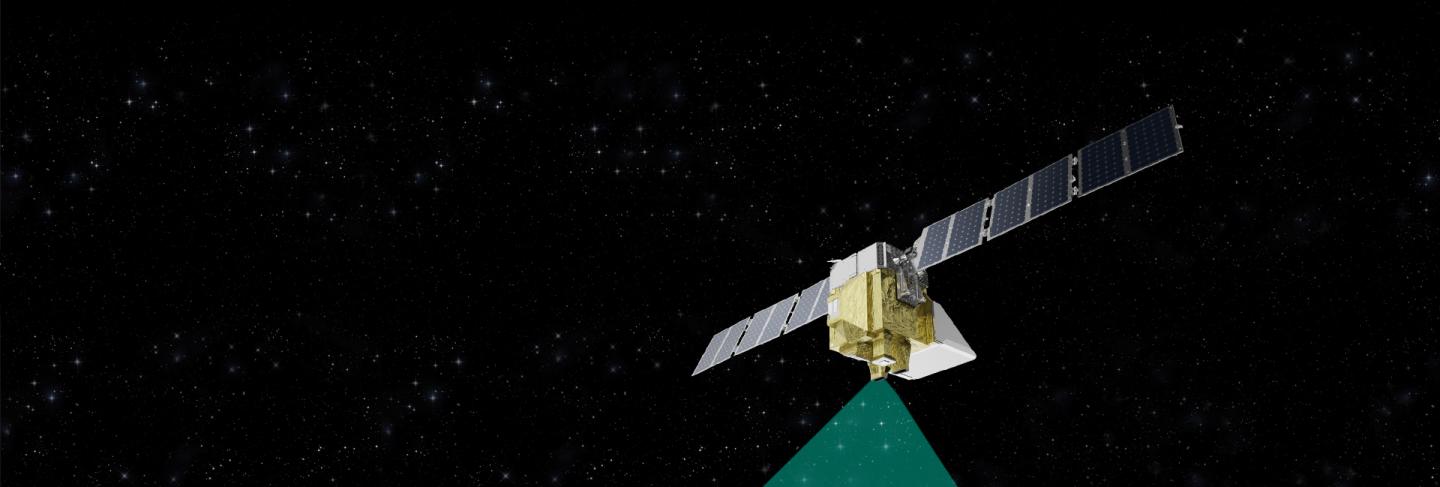
Hope for a warming planet
Get the latest Vital Signs stories delivered to your inbox
Feb. 26: Locked and loaded
We just heard from SpaceX that MethaneSAT is launch ready! The satellite has been bolted into the belly of the Falcon 9 rocket that will take it to space.
Inside the rocket, MethaneSAT will remain completely powered down until it’s ejected into space. That separation triggers a mechanical “on” switch that will turn on MethaneSAT’s flight computer.
“MethaneSAT will be running on battery until the solar wings open up several minutes later,” says Leslie Bartlett of Blue Canyon Technologies, the company that built the satellite’s external body. “Once the satellite fully boots up, it will call home, and mission operations from the ground begin.”
Feb. 23 Bill Nye talks methane
The launch of MethaneSAT is just weeks away, and we’re not the only ones excited. Check out what Bill Nye the Science Guy has to say about methane pollution and this new, high-tech tool in the climate fight. “MethaneSAT will help hold polluters accountable,” says the popular science educator, who — little known fact — once worked in an oilfield in west Texas.
Feb. 21: Company fined for huge methane leak detected by satellites
Scientists using data from multiple satellites have located and measured an unusually large methane leak in Kazakhstan. The oil and gas company responsible for that climate-harming leak, which went on for six months in 2023, will be fined approximately $774,000, according to the BBC.
Satellites are often the only way to document methane pollution in remote areas like this. Soon, MethaneSAT will make that view from space even more detailed. In addition to major disruptions like this one, which are relatively rare, MethaneSAT will locate and measure millions of smaller leaks that are responsible for the bulk of the methane problem.
“We’re effectively putting on a really high-quality set of glasses, allowing us to look at the Earth and these emissions with a sharpness that we’ve never had before,” says Steve Hamburg, chief scientist and MethaneSAT project lead at EDF.
Feb. 20: Dress rehearsals
It’s almost showtime! While the satellite sits tight behind the curtain at Vandenberg, MethaneSAT and partners Ball Aerospace and RocketLab have been practicing behind the scenes, running three marathon 12-hour-long rehearsals to simulate the satellite commissioning process — the sequence of events that happens in mission control after MethaneSAT enters space and boots up.
“We need to make sure we’re sending the correct commands, and that the spacecraft is executing them correctly,” says MethaneSAT’s Peter Vedder. “It’s training for the operations team, making sure we’re prepared for any issues — so that we know which buttons to press and who to call.”

Feb. 16 : Flying colors
MethaneSAT project director Ed Irvin just shared some good news — MethaneSAT has successfully completed its pre-launch testing at Vandenburg. “Basically, the satellite has been checked out, tested, closed out and provided to SpaceX,” said Irvin. “We're really thrilled to be at this point.”
Soon, Space X will bolt MethaneSAT into its position on the Falcon 9 rocket. For this mission, the 20-story tall rocket will be functioning like a space school bus — it’s expected to drop off more than 50 satellites into low-earth orbit. MethaneSAT is likely to be one of the last kids off the bus.
Feb. 16: New era of environmental accountability
MethaneSAT’s new partnership with Google will help spotlight climate-warming methane pollution — and hold polluters responsible.
In recent months, governments and major fossil fuel producers have announced a flurry of commitments to cut methane, the climate pollutant responsible for about 30% of the warming we’re feeling today. But will they actually get the job done? That’s where MethaneSAT comes in. Its data will reveal who’s walking the walk on cutting climate pollution. An independent partnership launched by EDF, the UN and others will be tracking and publicly reporting progress against those commitments, using data from MethaneSAT and other sources.
Feb. 14: Google announces partnership with MethaneSAT
Here’s a relationship to celebrate on Valentine’s Day: MethaneSAT is teaming up with Google on a critical part of its climate mission — to deliver useful data on methane, quickly, to anyone, anywhere, so they can use it to cut pollution.
Google announced today that Google Cloud will provide the computing capabilities required to process and host MethaneSAT’s ground-breaking climate pollution data quickly and securely.
The company will also improve MethaneSAT’s ability to identify oil and gas infrastructure, including things like storage tanks or pipelines, from satellite imagery using AI — in much the same way it detects sidewalks and street signs for Google Maps. This enhanced capability will help the MethaneSAT team pinpoint the facilities responsible for methane pollution in a particular region, and drive action on the ground to stop leaks.
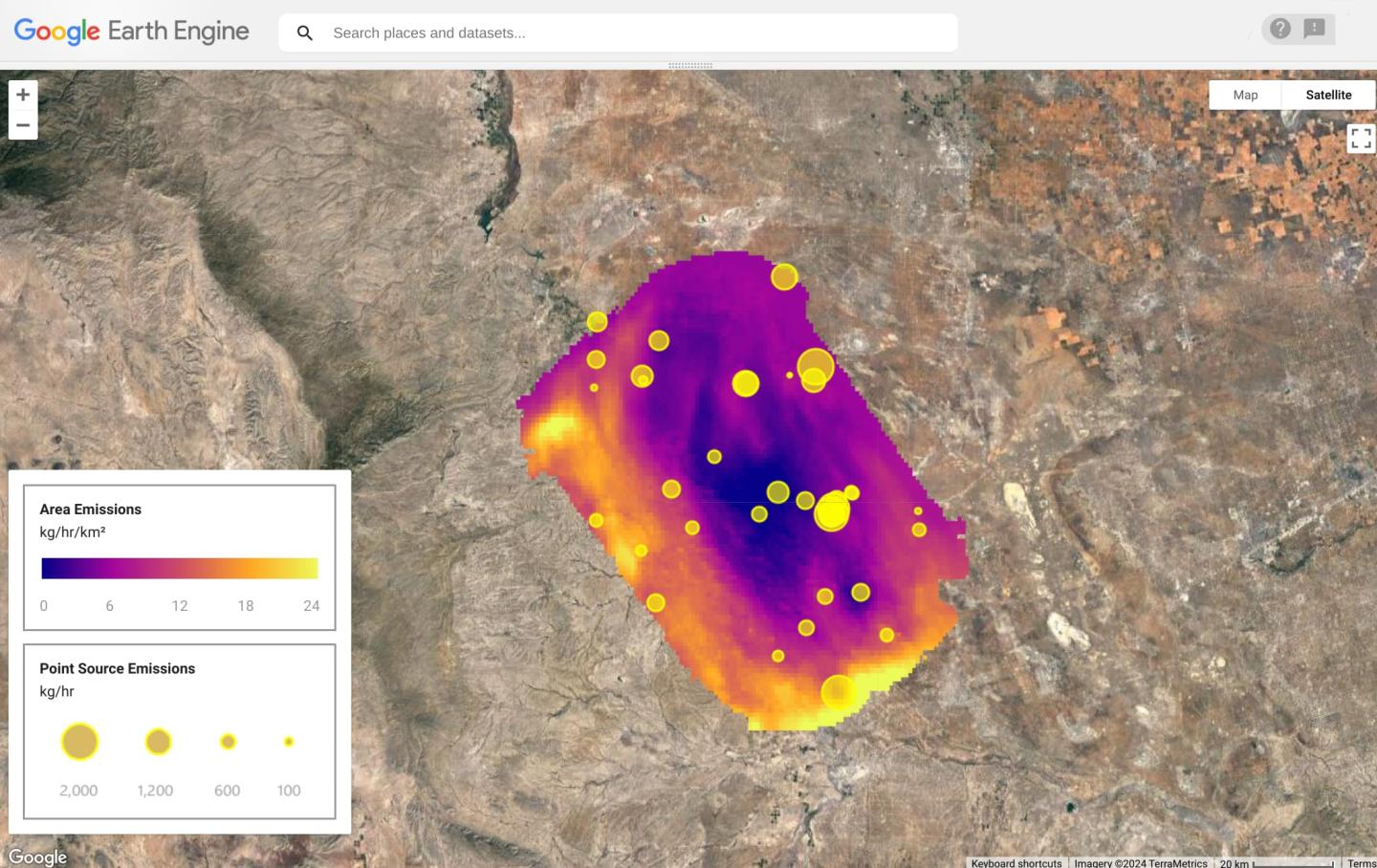
MethaneSAT data will also be integrated into Google Earth Engine, which will provide even broader access to the data for more users worldwide to take action, including governments, regulators, oil and gas companies and others.
“Figuring out how to address methane emissions is one of the biggest climate challenges we face today,” said Yael Maguire, VP/GM for Geo Sustainability at Google. “We’re excited to share actionable information that is urgently needed to achieve real impact.”
Feb. 12: Falcon 9 facts
Once MethaneSAT passes all its pre-flight checks at Vandenberg, it will be loaded onto a Space X Falcon 9 rocket, along with about 50 other satellites. SpaceX is planning to launch 144 flights to space this year, sending up a rocket roughly every other day. “It’s almost like an airline flight, it’s so routine,” says MethaneSAT’s Peter Vedder, who’s been managing space missions for decades. “But that doesn’t make it any less nerve-racking.”
Here are some fun facts about the Falcon 9:
- The rocket is named for the Millennium Falcon, Han Solo’s starship in the movie series Star Wars.
- The Falcon 9 is almost 230 feet tall — the height of a 20-story building.
- Several parts of the rocket are reusable. The first stage is designed to land on a floating drone ship or a stationary platform on land for recovery.
- One of SpaceX’s most-used Falcon 9s has been launched at least 16 times.
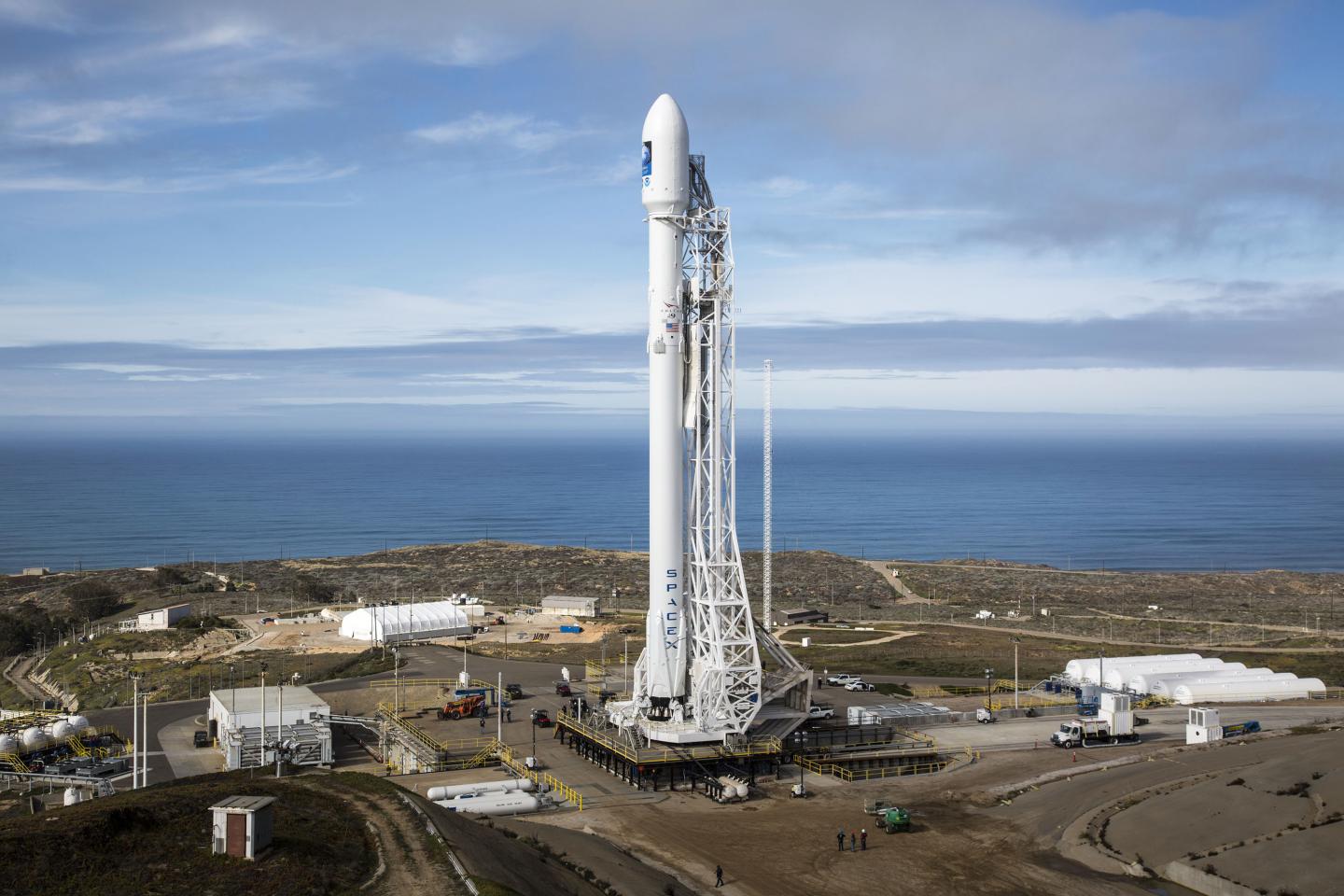
Feb. 9: Why methane is a climate threat
While MethaneSAT is getting unloaded and checked out at Vandenberg, let’s take a minute to brush up on 6 essential facts about methane. Methane is kind of like carbon dioxide's pesky younger sibling. It's often overlooked, but it can have a big impact in a short time.
Feb. 7: Arrival at launch site confirmed
Some good news from rainy southern California — MethaneSAT has been successfully delivered to its launch site, Vandenberg Space Force Base, about 25 miles north of Santa Barbara. The 100,000-acre base has about 16 launch facilities that are used by the military, government agencies like NASA and private contractors such as Space X. MethaneSAT will be riding a SpaceX Falcon 9 rocket to space in early March.
Feb. 6: On the move
How do you get a satellite from point A to point B without going to space? Very carefully. In this time-lapse video, MethaneSAT is preparing to move from a Ball Aerospace facility in Boulder, Colorado, to its launch site in California. The satellite is carefully cradled in a specialized protective container and loaded on a custom 18-wheeler equipped with climate control and extra shock absorbers.
Also in the truck: racks of computers, tools, equipment for launch, nitrogen cooling tanks and other gear. “It’s kind of like going on a camping trip,” explains Peter Vedder, Senior Director of Mission Systems at MethaneSAT. “You have to bring everything you think you might need for launch.”
(Ball Aerospace)
Feb. 6: A closer look
Here’s a look at the business end of MethaneSAT. It’s wrapped in white insulation, similar to an astronaut's space suit, to protect it from heat and cold. The protruding ovals are the “eyes” of its infrared spectrometers, which will be scanning the globe for methane pollution. The squares are two different types of radio antennae, X-band and S-band, for communicating back to Earth.
Feb. 5: Why is an environmental group launching a satellite?
While MethaneSAT prepares for launch, here's a look back to where it all started. Fred Krupp, president of the global nonprofit Environmental Defense Fund, first announced MethaneSAT at a TED talk about climate change in 2018. “I've worked my whole career for a moment like this,” he said. “The moment when we can stop fighting headwinds and start to have the wind at our backs.”
Feb. 4: Getting ready to roll
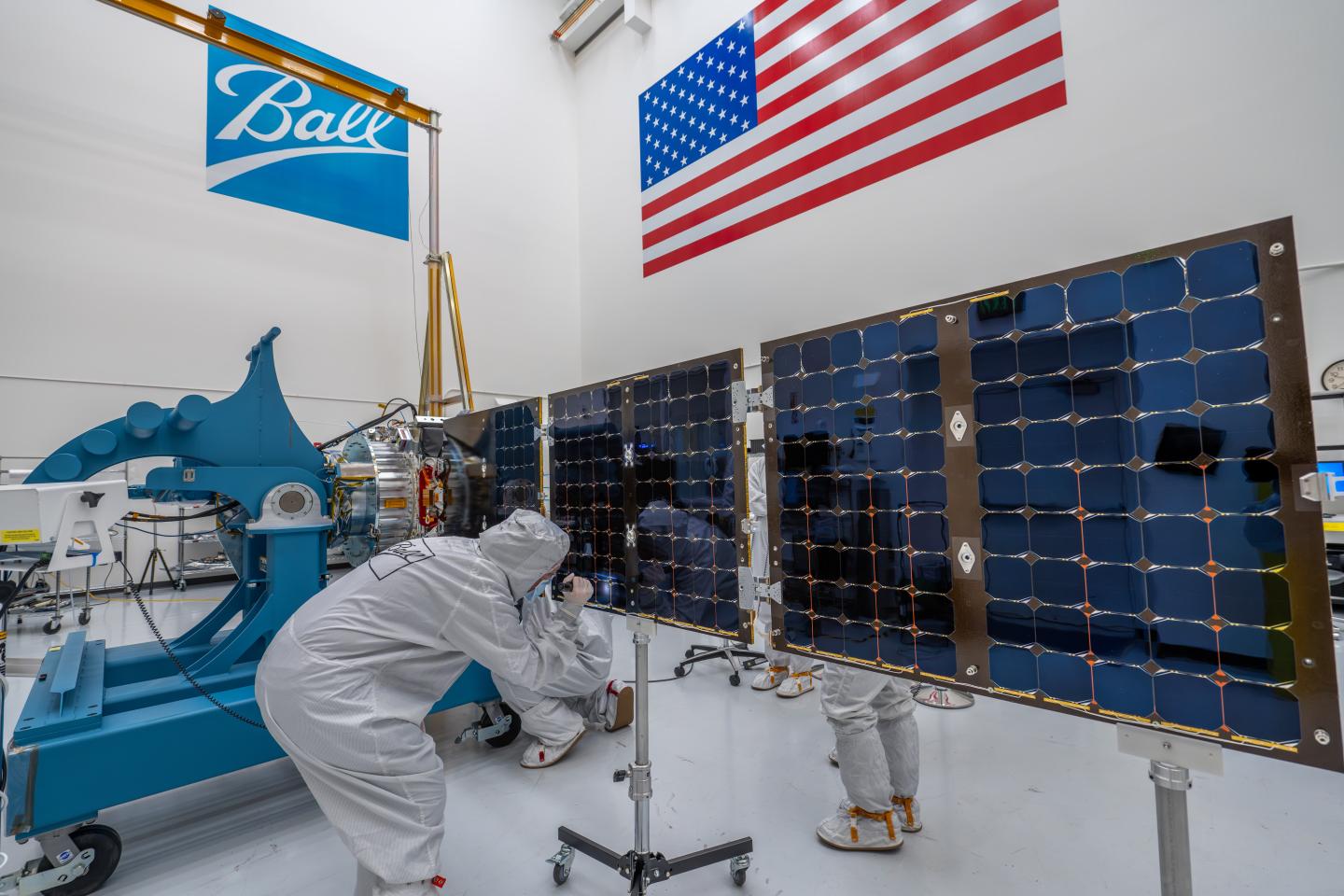
MethaneSAT, a satellite uniquely equipped to fight global warming, recently underwent some final checks at a Ball Aerospace facility in Boulder, Colorado. Ball has developed instruments for the Hubble and James Webb space telescopes, among other pioneering space projects. The company has been working on MethaneSAT and its groundbreaking, high-precision methane sensor for nearly 6 years. “These are among the most sophisticated sensors Ball has built,” said Alberto Conti, VP and GM of Civil Space at Ball.